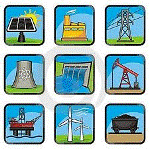Department of Agricultural Economics: Undergraduate Research

Op-Eds from ENSC230 Energy and the Environment: Economics and Policies
Date of this Version
Fall 12-19-2016
Document Type
Article
Citation
Op-Ed from ENSC 230. Energy and the Environment: Economics and Policy, University of Nebraska-Lincoln, Department of Agricultural Economics, Fall 2016
Abstract
For anyone who has ever lived in Nebraska, you know the state is filled with people who resist change. Nebraska is “The Good Life.” Any adjustments or modifications that could disrupt the lifestyle are not welcomed. The people who are elected into office clearly reflect this type of mindset.
It is time for Nebraska to get outside of their comfort zone. We need to move from the good life to the great, healthy, and progressive life by developing a state-wide Energy Efficiency Resource Standard or Goal.
20 states have Mandated Statewide Energy Efficiency Resource Standards and 8 states have Goals in place (3). Unfortunately, Nebraska is not among the group. On February 10, 2016 Nebraska’s Department of Environmental Quality Director, Jim Macy, stated the department is postponing their meetings to develop the EPA Clean Power Plan Mandate indefinitely.
A week beforehand, the Supreme Court halted the EPA’s Clean Power Plan to reduce 32% of the carbon emissions from U.S. power plants from 2005 levels by 2030. The plan required each state to submit their emission targets and strategies by September of this year but did not have to comply until 2022. Once they heard the news, NDEQ quickly stopped any discussion of decreasing the state’s heavy reliance on coal.
Three-fifths of Nebraska’s energy comes from coal and less than 10% comes from renewable energy sources (4). Be that as it may, geography is not a factor for potential renewable energy for the state. The National Renewable Energy Laboratory estimates 90% of Nebraska’s land is suitable for commercial scale wind generation.
The Public Power Districts mimic monopolies. Nebraska’s consumer does not have a choice in where their energy is sourced, the public power districts decide for us. For that reason, the state government needs to become the voice for the people, even if it not required by the federal government. If a statewide mandate for energy efficiency was set by the EPA, then the PPD would be forced to adjust where their energy is produced from or invest more in renewables. It would drop our heavy reliance on coal. The cleaner technology is out there. It just needs to be utilized.
Statewide Energy mandates have been successful for several states who have implemented them. In 2008, Michigan passed an energy law requiring utilities to get 10% of their energy from renewable sources by 2015. They were successful reaching their goal, so the benchmark was increased to 12.5% by 2021 and 15% by 2022(4).
Energy mandates do not have to only focus on the utility companies. Responsibility should be put on the consumers as well. In 2011, Minnesota passed Executive Order 11-12 and 11-13, requiring each state agency to reduce their energy by 20% and to establish an energy savings goal. Their mandate also includes a “Sustainable Building 2030” standard designed to achieve energy reductions of 90% by 2025.
Having a statewide energy efficiency mandate is essential to reducing Nebraska’s carbon footprint. The American Council for an Energy Efficient Economy released its latest report using their energy efficiency scorecard. Nebraska was ranked 42nd out of 50 states in their energy efficiency policy and programs. ACEEE’s research showed states with energy efficient mandates have shown average energy efficiency spending and saving levels are more than three times as high as states without an EERS policy (3).
NDEQ will not create a statewide energy efficiency mandate without the support from the residents of Nebraska. However, it is clear we want a change. In 2008, the University of Nebraska-Lincoln surveyed around 2,500 residents in rural communities around Nebraska. 91% agreed or strongly agreed that more should be done to develop such alternative energy sources as ethanol, biodiesel, wind, and solar.
Creating the statewide energy efficiency mandate is essential to reducing energy consumption and pollution in the state. It can require the PPDs to value energy efficiency and to offer energy efficient programs and incentives, along with reducing energy consumption by industries in the state. With the cooperation from the utilities and its residents, Nebraska could be on its way to reducing its carbon footprint and creating a great, healthy, and progressive life.
Included in
Environmental Indicators and Impact Assessment Commons, Natural Resources and Conservation Commons, Oil, Gas, and Energy Commons, Other Environmental Sciences Commons

